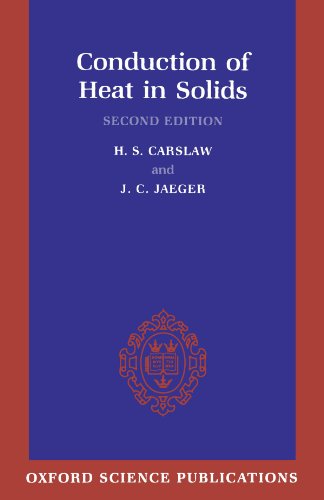Conduction of Heat in Solids pdf download
Par brimmer peter le mardi, août 16 2016, 22:11 - Lien permanent
Conduction of Heat in Solids by H. S. Carslaw, J. C. Jaeger


Conduction of Heat in Solids H. S. Carslaw, J. C. Jaeger ebook
ISBN: 0198533683, 9780198533689
Format: djvu
Page: 517
Publisher: Oxford University Press, USA
Heat can be transferred by three processes: conduction, convection, and radiation. Conduction is the transfer of heat along a solid object; it is this process that makes the handle of a poker hot, even if only the tip is in the fireplace. Conduction heat transfer is the heat transfer through medium without accompanied by displacement of the particle medium. Conduction is essentially heat transfer through solids. Because molecules are farther apart in gases than in solids, the gases are much poorer conductors of heat. When the distance between two solid objects of differing temperatures goes to zero and they come into direct contact, the heat exchange between them is then called conduction. Heat can be transferred from one place to another by three different methods, namely Conduction, Convection and radiation. Conduction usually can occur in solids such as various types of metal and glass. Students know heat flows in solids by conduction (which involves no flow of matter) and in fluids by convection (which involves flow of matter). Conduction Heat transfer always takes place by areas of high heat energy migrating to areas of. The atomic picture also will help explain why conduction is more critical in solids: in solids the atoms are close jointly and unable to move round. And Jaeger, J.C., Conduction of Heat in Solids, 2nd ed., Clarendon Press, Oxford, England, section 3.3, p. Here are quick definitions, how they apply to your attic, and how to fix them: 1.